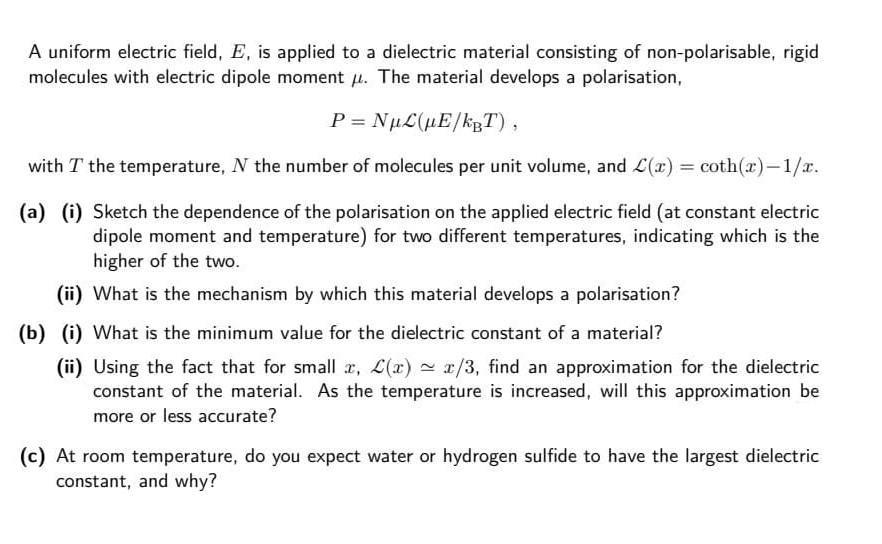Answered step by step
Verified Expert Solution
Question
1 Approved Answer
A uniform electric field, E, is applied to a dielectric material consisting of non-polarisable, rigid molecules with electric dipole moment. The material develops a

A uniform electric field, E, is applied to a dielectric material consisting of non-polarisable, rigid molecules with electric dipole moment. The material develops a polarisation, NL(E/KBT), with I the temperature, N the number of molecules per unit volume, and L(x) = coth(z)-1/x. (a) (i) Sketch the dependence of the polarisation on the applied electric field (at constant electric dipole moment and temperature) for two different temperatures, indicating which is the higher of the two. (ii) What is the mechanism by which this material develops a polarisation? (b) (i) What is the minimum value for the dielectric constant of a material? (ii) Using the fact that for small x, L(x) = x/3, find an approximation for the dielectric constant of the material. As the temperature is increased, will this approximation be more or less accurate? (c) At room temperature, do you expect water or hydrogen sulfide to have the largest dielectric constant, and why?
Step by Step Solution
★★★★★
3.50 Rating (150 Votes )
There are 3 Steps involved in it
Step: 1
Solution Figure 1 File Ed...
Get Instant Access to Expert-Tailored Solutions
See step-by-step solutions with expert insights and AI powered tools for academic success
Step: 2

Step: 3

Ace Your Homework with AI
Get the answers you need in no time with our AI-driven, step-by-step assistance
Get Started


